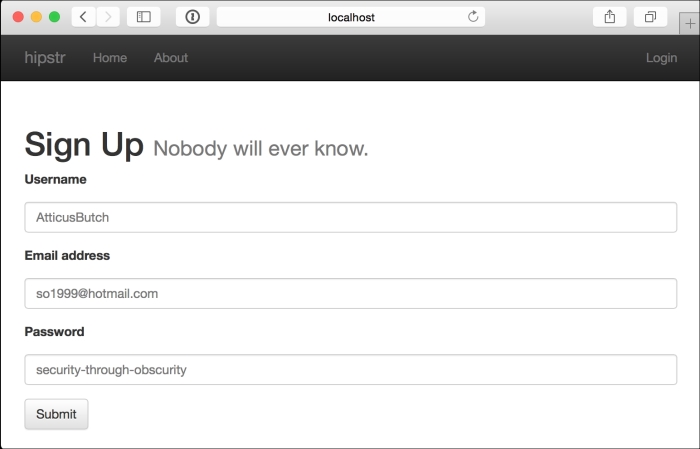We are programmers, and therefore, we are lazy. As such, we're going to create a new template at resources/templates/signup.html and have it extend our base template. This way, all we need to worry about is the content of the actual login form and a heading. This is the beauty of template inheritance:
{% extends "templates/base.html" %}
{% block content %}
<h1>Sign Up <span class="small">Nobody will ever know.</span></h1>
<div class="row">
<div class="col-md-6">
<form role="form">
<div class="form-group">
<label for="username">Username</label>
<input type="input" class="form-control" name="username" placeholder="AtticusButch">
</div>
<div class="form-group">
<label for="email">Email address</label>
<input type="email" class="form-control" name="email" placeholder="[email protected]">
</div>
<div class="form-group">
<label for="password">Password</label>
<input type="password" class="form-control" name="password" placeholder="security-through-obscurity">
</div>
<button type="submit" class="btn btn-default">Submit</button>
</form>
</div>
</div>
{% endblock %}If you save and refresh http://localhost:300/signup, you'll notice we still see the goofy salutation. That's because we haven't adjusted our sign up route to render the template.
Back in the hipstr.routes.home namespace, add a new function, signup-page, which is responsible for rendering the sign up page. We can use the hipstr.layout/render function to handle it for us:
(defn signup-page [] (layout/render "signup.html"))
Finally, get rid of that goofy salutation in the sign up route and replace it with a call to signup-page:
(GET "/signup" [] (signup-page))
Now when you save and refresh, you'll see your new form:

